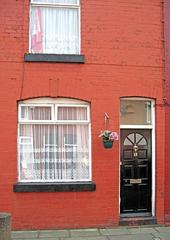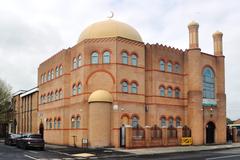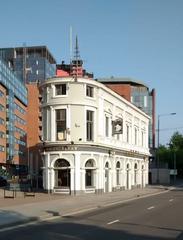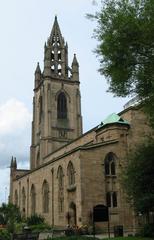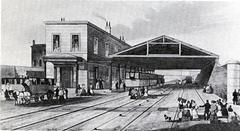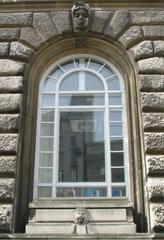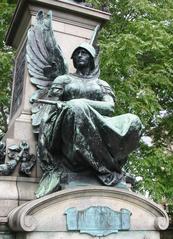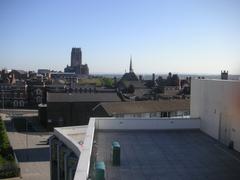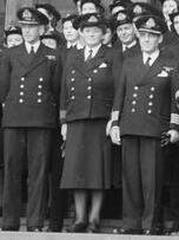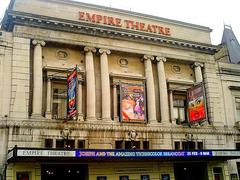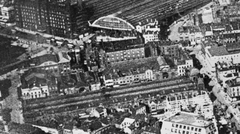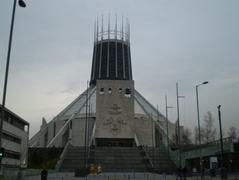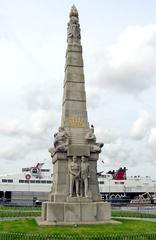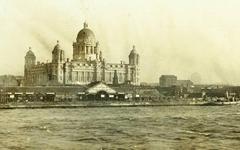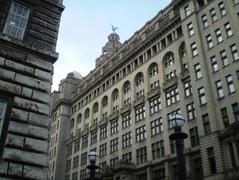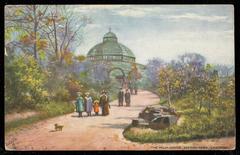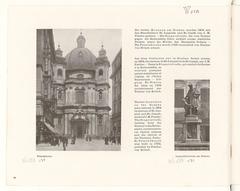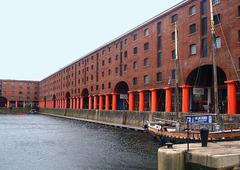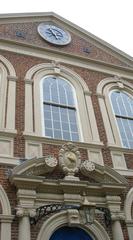
Liverpool Cenotaph: Visiting Hours, Tickets, and Historical Significance
Date: 04/07/2025
Introduction
The Liverpool Cenotaph stands as one of the United Kingdom’s most distinguished war memorials, offering a poignant tribute to the men and women of Liverpool who sacrificed their lives during the First and Second World Wars and subsequent conflicts. Positioned on St George’s Plateau, directly in front of the iconic St George’s Hall, the cenotaph not only anchors the city’s remembrance ceremonies but also represents a remarkable achievement in 20th-century commemorative architecture (Historic England, BBC Liverpool).
Designed by Lionel Budden and featuring evocative bronze reliefs by Herbert Tyson Smith, the memorial is accessible 24 hours a day and is fully wheelchair friendly. This guide provides a comprehensive overview of the Liverpool Cenotaph’s historical origins, architectural and artistic features, practical visitor information, and its enduring role in Liverpool’s civic life.
Historical Background
Early Proposals and Social Context
The movement to create a permanent war memorial in Liverpool began in 1920, a reflection of nationwide efforts to commemorate the fallen of World War I (Historic England). Economic hardship and high unemployment delayed the project, with early Armistice Day services relying on a temporary wooden cenotaph (BBC Liverpool, Explore the Archive).
Decision to Build and Funding
By 1925, Liverpool City Council formed a special committee and allocated municipal funds, ensuring the project’s viability. St George’s Plateau was selected for its symbolic significance and established use for public gatherings (BBC Liverpool).
Design Competition and Construction
A 1926 design competition attracted 257 entries, with Lionel Budden’s proposal ultimately selected for its “dignity, simplicity and reserve.” The cenotaph’s horizontal, altar-like design was deliberately chosen to harmonize with the vertical grandeur of St George’s Hall (Historic England). Construction began in 1927, using Stancliffe and Yorkshire Silex stone, and was completed in 1928 (Kids Kiddle).
Artistic Collaboration
The memorial’s most striking features are its two bronze relief panels by Herbert Tyson Smith. The north-west panel depicts Liverpool soldiers marching to war, while the south-east panel shows mourners at a Stone of Remembrance, symbolizing the collective grief and ongoing remembrance of the city (Liverpool University Architecture, Only in Liverpool).
Inscriptions and Symbolism
The cenotaph bears the dates “1914–1919” and “1939–1945,” marking both world wars. In 2001, the phrase “AND ALL WHO HAVE FALLEN IN CONFLICT SINCE” was added, broadening its commemorative reach. Biblical inscriptions and the Liverpool coat of arms reinforce the memorial’s civic and spiritual significance (War Memorials Online).
Unveiling and Public Reception
Unveiled on Armistice Day (11 November 1930) to a crowd of 80,000, the cenotaph was initially met with some criticism for its unconventional form. Over time, it has become widely appreciated for its dignified simplicity and integration with St George’s Hall (Kids Kiddle).
Heritage Status
Originally Grade II listed in 1952, the cenotaph was upgraded to Grade I status in 2013, cementing its place among Britain’s most significant war memorials (Historic England).
Architectural and Artistic Features
Site Layout and Context
Situated on St George’s Plateau, the cenotaph’s horizontal form forms a visual dialogue with the vertical columns of St George’s Hall. This careful placement enhances both the monument’s solemnity and the grandeur of its urban setting (Only in Liverpool).
Architectural Design and Materials
Budden’s design features a rectangular altar of Portland stone, about 11 meters long and 2.5 meters high. Its clean lines and restrained ornamentation evoke both classical traditions and modern sensibilities (Liverpool University Architecture).
Sculptural Reliefs
- North-west (St George’s Hall) Panel: Depicts Liverpool soldiers marching in disciplined ranks, symbolizing unity and sacrifice.
- South-east (Lime Street) Panel: Shows mourners in contemporary dress alongside a Stone of Remembrance, with gravestones receding in the background. This side emphasizes the scale of loss and the ongoing process of collective mourning (Liverpool University Architecture).
Inscriptions
- “TO THE MEN OF LIVERPOOL WHO FELL IN THE GREAT WAR”
- “AND ALL WHO HAVE FALLEN IN CONFLICT SINCE”
- “AND THE VICTORY THAT DAY WAS TURNED INTO MOURNING UNTO ALL THE PEOPLE” (II Samuel 19:2)
- “AS UNKNOWN AND YET WELL KNOWN; AS DYING, AND BEHOLD WE LIVE” (II Corinthians 6:9)
- “OUT OF THE NORTH PARTS A GREAT COMPANY AND A MIGHTY ARMY” (Ezekiel 38:15)
These inscriptions, along with the Liverpool coat of arms, reinforce the dual civic and spiritual role of the memorial (Historic England).
Purpose, Symbolism, and Community Role
The cenotaph’s horizontal “empty tomb” form symbolizes the anonymity of mass graves and the collective nature of wartime sacrifice. Its annual ceremonies on Remembrance Sunday and Armistice Day draw thousands, including veterans, civic leaders, and the public, highlighting its central role in Liverpool’s collective memory (British Legion). The memorial also serves as a focal point for broader educational and community engagement, with local schools and veterans’ associations using it as a teaching resource and gathering space (University of Liverpool).
Visiting Liverpool Cenotaph: Practical Information
Visiting Hours
- Open 24 hours a day, 7 days a week
- No entry fees or tickets required
Accessibility
- Fully wheelchair accessible
- Level, paved surfaces on St George’s Plateau
- Close to Liverpool Lime Street Station and major bus routes
Getting There
- By Train: Liverpool Lime Street Station is a five-minute walk
- By Bus: Numerous city centre routes stop nearby
- By Taxi: Request a drop-off at St George’s Hall
Facilities
- Public toilets inside St George’s Hall (during hall opening hours)
- Nearby cafés and restaurants on Lime Street and in St John’s Shopping Centre
- Hotels such as Radisson RED Liverpool, The Liner, and Marriott Liverpool City Centre are within walking distance
Best Times to Visit
- Remembrance Events: Second Sunday in November and November 11th for official ceremonies
- Quiet Reflection: Early mornings or late evenings
Visitor Etiquette
- Be respectful, especially during ceremonies
- Photography is permitted but should be discreet during commemorations
- No seating at the cenotaph, but benches are available nearby
Safety
- City centre is monitored by CCTV and regular police patrols
Nearby Attractions
- St George’s Hall: Neoclassical architecture and exhibitions (St George’s Hall)
- Liverpool Central Library
- World Museum Liverpool
- Walker Art Gallery
- Georgian Quarter
- Liverpool Cathedral’s War Memorial Chapel
Frequently Asked Questions (FAQ)
Q: What are the Liverpool Cenotaph visiting hours?
A: Open to the public 24/7.
Q: Is there an entry fee or ticket required?
A: No, visiting is free.
Q: Is the site wheelchair accessible?
A: Yes, fully accessible pathways and public transport links.
Q: Are guided tours available?
A: While no official tours focus solely on the Cenotaph, many Liverpool city walking tours include it as a highlight.
Q: When are the main commemorative events?
A: Remembrance Sunday (second Sunday in November) and Armistice Day (November 11th).
Conservation and Recognition
The Liverpool Cenotaph’s elevation to Grade I listed status in 2013 underscores its national importance and ensures efforts to preserve its artistry and legacy (Liverpool University Architecture). Ongoing conservation ensures that the memorial remains a dignified site of remembrance for generations to come (Only in Liverpool).
Planning Your Visit
To make the most of your visit:
- Download Liverpool’s official visitor app for historical tours and event updates.
- Follow Liverpool’s tourism and heritage pages for ceremony times and travel advice.
- Consider combining your visit with nearby sites for a broader understanding of Liverpool’s war history.
Further Information and Useful Links
- Liverpool Cenotaph: Visiting Hours, Tickets, History, and Nearby Attractions
- Liverpool Cenotaph, Historic England
- Liverpool Cenotaph, BBC Liverpool
- Liverpool Cenotaph, Only in Liverpool
- Liverpool Cenotaph Grade I Listing, Liverpool University Architecture
- Remembrance Sunday and Liverpool Cenotaph, British Legion
- Liverpool Cenotaph and Wartime Heritage, University of Liverpool History Blog
- War Memorials Online
- Visit Liverpool – Visitor Information
- Liverpool Cathedral – War Memorial Tours
- Evendo – Liverpool Cenotaph
- Lonely Planet – Liverpool Travel Tips
- Nomadic Matt – Liverpool Travel Guide
Conclusion
The Liverpool Cenotaph stands as a powerful symbol of remembrance, resilience, and civic unity. From its carefully considered architectural design to its role at the heart of Liverpool’s commemorations, it provides a meaningful experience for all visitors. Whether you are attending a major ceremony or seeking a moment of quiet reflection, the Cenotaph invites you to connect with Liverpool’s rich wartime heritage and honor those who came before.
Plan your visit today, and for more information or event updates, download the Audiala app and follow Liverpool’s heritage channels.






